MediaTek Dimensity 8100
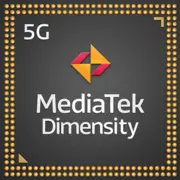
MediaTek Dimensity 8100: The Perfect Balance Between Power and Efficiency
Relevant as of April 2025
Introduction
In the world of mobile technology, the choice of processor is the foundation that defines the smartphone experience. MediaTek Dimensity 8100, introduced in 2022, has retained its status as one of the most balanced options for mid-range and premium devices by 2025. Combining high performance, energy efficiency, and support for modern technologies, this chip has become popular among gamers, photographers, and everyday users. In this article, we will explore why the Dimensity 8100 is still relevant and who it is suitable for.
Architecture and Process Technology: The Basis of Stability
8-Core Structure and 5nm: The Heart of Efficiency
The Dimensity 8100 is built on TSMC's 5-nanometer process technology, ensuring low power consumption (TDP 6W) and minimal heating. The CPU architecture includes:
- 4 high-performance Cortex-A78 cores with a clock speed of up to 2.85 GHz for demanding tasks.
- 4 energy-efficient Cortex-A55 cores at 2.0 GHz for background processes.
This 4+4 configuration, based on ARM's big.LITTLE architecture, allows for dynamic load distribution, saving battery life. In Geekbench 6 tests, the chip scores 1141 points in single-core and 3640 in multi-core modes, which is close to flagship figures from previous years.
Mali-G610 MP6 GPU: Graphics Without Compromise
The Mali-G610 MP6 graphics processor with 6 cores supports resolutions up to 2K+ (1440p) and a refresh rate of 120 Hz. It is optimized for Ray Tracing technology in mobile gaming and HDR video processing. In synthetic tests on AnTuTu 10, the chip scores 843,925 points, placing it on par with Snapdragon 888.
Real-World Performance: From Gaming to AI
Gaming: Smoothness and Stability
With the Dimensity 8100, games like Genshin Impact or Call of Duty: Mobile run at high settings with FPS ranging from 50-60, while the device temperature rarely exceeds 40°C thanks to efficient heat distribution. Support for HyperEngine 5.0 enhances network responsiveness and reduces latency.
Multimedia: 4K and Dolby Vision
The chip decodes 4K video at 60fps and supports HDR10+, making it ideal for streaming. Smartphones featuring this processor often come with OLED displays at 120 Hz, enhancing the viewing experience.
AI Tasks: Smart Optimization
The built-in AI processor APU 580 accelerates scene recognition in cameras, automatic settings adjustment, and operation of voice assistants. For instance, the night mode activates in 0.5 seconds, and focus in portraits is nearly instantaneous.
Energy Consumption: Long Battery Life
Thanks to its 5nm architecture and optimization, a smartphone with Dimensity 8100 and a 5000 mAh battery can operate for 7-9 hours under active use (gaming, social media, navigation). In standby mode, energy consumption is minimal—Cortex-A55 cores handle background processes efficiently.
Integrated Modules: Speed and Versatility
5G and Wi-Fi 6: Always Connected
The integrated modem supports 5G Sub-6 GHz with peak speeds of up to 4.7 Gbps, as well as frequency aggregation for a stable signal. Wi-Fi 6 provides speeds up to 1.2 Gbps, while Bluetooth 5.3 allows for low-latency headphone connections (LC3 codec).
Navigation: Accuracy Within a Meter
The chip works with GPS (L1+L5), GLONASS, Galileo, QZSS, and Beidou, ensuring quick location determination even in mountainous areas or megacities.
Comparison with Competitors: Strengths
- Snapdragon 7 Gen 2: Lags in multi-core tasks (Geekbench Multi ~3400) but excels in energy efficiency.
- Exynos 1380: Better at AI tasks, but Dimensity 8100 is more stable in gaming.
- Apple A16 Bionic: More powerful in single-core tests (Geekbench Single ~1900), but pricier and available only in iPhones.
In its price range ($400-600), the Dimensity 8100 offers the best balance: it nearly matches the Snapdragon 8 Gen 1 in gaming performance but is more affordable.
Usage Scenarios: Who Is It For?
1. Gamers: Smooth gameplay without throttling.
2. Amateur Photographers: Support for cameras up to 200 MP and 4K/60fps recording.
3. Travelers: Long battery life and precise navigation.
4. Students/Office Workers: Fast multitasking (simultaneous work with documents, browsers, and messengers).
Pros and Cons
Advantages:
- High performance in games and applications.
- Low heating.
- Support for current communication standards (5G, Wi-Fi 6).
- Affordable device prices.
Disadvantages:
- No mmWave 5G support (relevant only for the USA).
- GPU weaker than that of Snapdragon 8 Gen 2.
Practical Tips for Choosing a Smartphone
1. Cooling: Look for models with a vapor chamber or graphite plates.
2. Display: AMOLED with a 90-120 Hz refresh rate for smooth animations.
3. Battery: At least 4500 mAh for comfortable use.
4. Cameras: Optical image stabilization (OIS) will improve photo and video quality.
Examples of models from 2025:
- Xiaomi Redmi Note 13 Pro+ ($499): 120 Hz AMOLED, 200 MP camera.
- Realme GT Neo 5 ($549): Dynamic lighting, 150W charging.
Final Verdict: Who Should Buy It?
The MediaTek Dimensity 8100 is the ideal choice for those looking for a versatile smartphone without overpaying for top-tier brands. It is suitable for:
- Gamers, valuing stability.
- Travelers, needing high battery life.
- Content creators, shooting in 4K.
The main benefits: powerful performance, cool operation, and future-proof technologies at reasonable prices. If your budget is between $500-600, the Dimensity 8100 is one of the best options on the market.
Basic
4x 2 GHz – Cortex-A55
GPU Specifications
Connectivity
Memory Specifications
Miscellaneous
Benchmarks
Phones with Dimensity 8100



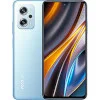
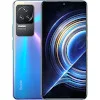
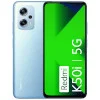

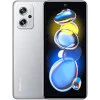
Tablets with Dimensity 8100
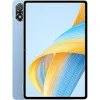
Comparison of Devices with Dimensity 8100
Compared to Other SoC
Related SoC Comparisons
Share in social media
Or Link To Us
<a href="https://cputronic.com/soc/mediatek-dimensity-8100" target="_blank">MediaTek Dimensity 8100</a>

